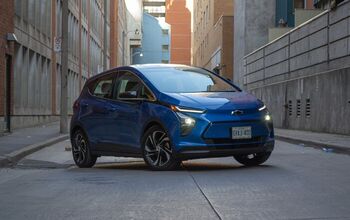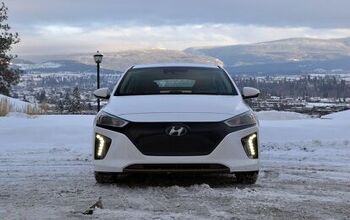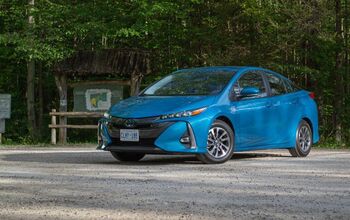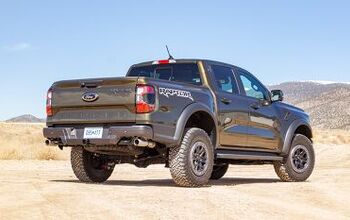2020 Hyundai Ioniq Electric Review: It's Okay To Blend In

But if everyone’s hell-bent on doing something outrageous wouldn’t that qualify as the norm instead of something unique? Confused? I think the electric car space would best explain it.
The push towards the EV as a sustainable mode of personal transport is massive. But most automakers are so absorbed with making design statements of the future that they seem to forget what’s right in front, the present. Among the futuristic-looking cars made out of composite materials, an honest to metal Hyundai Ioniq seems almost like an anomaly. Unlike a lot of electric cars, even the ones based on conventional models, it comes across as quite normal. And despite looking the way it does, it stands apart from the regular EV crowd.
An Aesthetic Perspective
Aesthetically, the Ioniq doesn’t look too different from the hybrid. The only giveaways are the solid plastic panel instead of the grille, aero wheels and the electric badge on the trunk lid. Apart from that, the Ioniq looks like a spacious and a slightly sleeker version of a conventional hatchback with a large rear window and a glass panel encroaching the trunk.
The Green-house
FAST FACTS
| Engine: | Permanent Magnet Synchronous Motor |
| Output: | 134 hp, 218 lb-ft |
| Transmission: | E-CVT |
| US fuel economy (MPG): | 145/121/33 |
| CAN fuel economy (L/100KM): | 1.6/1.9/1.8 |
| Starting Price (USD): | $34,040 (inc. dest.) |
| As-Tested Price (USD): | $39,610 (est, inc. dest.) |
| Starting Price (CAD): | $$43,224 (inc. dest.) |
| As-Tested Price (CAD): | $47,824(inc. dest.) |
Green- eco-friendly, get it? Much like the exterior, barring a few quirks, the cabin is almost identical to the one you’d find on the hybrid trims. The seats are made from regular faux leather and in the case of the SE, from regular fabric and the same is the case at the rear. Driver’s perch is comfortable and despite the shorter squab length you don’t feel shortchanged. Visibility is great all around and there is a good feeling of space thanks to large glass surfaces.
With 39.1 inches (993 mm) of headroom in the front and 37.2 inches (944 mm) of it in the rear, it is just about adequate for most passengers. Passengers taller than six feet will feel the headroom crunch as the battery under the rear bench raises the height considerably.
While the footwells are quite spacious in the front, the rear with 35.7 inches of legroom is just about adequate for most occupants. Plus, seating three in the rear is a squeeze as the center console protrudes into the rear bench due to the HVAC vents. The rear squabs hold you well but the flat seatback does mean you tend to slide out of them in the sharper turns. Adjustable headrests though add to the comfort. Plus, despite the tiny moonroof, the low-ish shoulder line adds to the feeling of overall space in the rear. The trunk, though shallow, offers 23 cu-ft. of. luggage capacity, enough for a few days’ vacation worth.
The dash looks futuristic, appealing and worthy of a ‘Gram story. But it lacks tactility. Hyundai has completely rid the center console of physical buttons which dramatically reduces the usability of what should have been an otherwise normal and functional cabin. Everything is controlled by touch, the 10.25 infotainment screen, redundant shortcuts, even the climate control. The only buttons on the center dash control the CVT gearbox, heated seats, and drive modes. You can work around the redundant touch controls for the infotainment via the steering mounted controls. There is no escape from the HVAC controls, however. Using touch controls for the climate control just doesn’t feel organic and you miss the dials and buttons that should have been there.
Silent As She Goes
Unlike a lot of electric cars, the Ioniq doesn’t sport a frunk, instead you find in there what you find in other normal cars, its powerplant. The single motor setup coupled with a 38.3 kWh battery pack manages 134 hp and 218 lb-ft of max torque which proves to be adequate. One of the biggest advantages of an electric powertrain is the initial torque and off the line, Ioniq feels quick even in Eco Mode.
The driving modes make a noticeable difference in the way the car pulls and its range. While the throttle response gets sharper in Normal mode compared to Eco, it is at its sharpest in Sport. But shifting to sport mode reduces the DTE by nine miles. Speaking of shifting, the gear selector, with its odd color choice seems a bit ambiguous, especially when trying to locate neutral.
But throttle response is the only thing that changes when you cycle through the driving modes. The suspension setup remains uniform and is quite well balanced to begin with. The little electric car tackles the uneven downtown surfaces with ease and doesn’t feel overly soft or wobbly unless you hit a really bad patch of road. Even sharp turns and hairpins barely unsettle its composure. Build quality also feels solid.
SEE ALSO: 2020 Chevrolet Bolt EV ReviewThere are no squeaks or rattles from the cabin, something that won’t escape your notice in a car with no engine sound. It also comes with paddle shifters but they control the three-level regenerative braking force rather than the gearshifts. Driving with a single pedal is pretty straightforward and honestly quite useful in the city but out on the highway, it really helps to just coast.
But its most appealing attribute is its ability to blend into the city. When you drive around town, no one gives it a second look despite the missing radiator grille and aero wheels. Plus, the sedate blue helps as well. Unlike other EVs which seem to point their proverbial accusatory fingers at every gas-powered car, the Ioniq passes under the radar, unnoticed and you enjoy that ambiguity. Anyone looking to get noticed in their EV should clearly look elsewhere.
SEE ALSO: 2021 Mini Cooper SE Review: Close But No CigarIts highway capability depends more on how much range anxiety are you willing to cope with rather than its highway manners. It feels adequate out on the highway too. It’s no corner carver but even at cruising speeds, there isn’t much that will unsettle it. It flows with the road amidst elevation and direction changes. Though the larger bumps will be noisy, the jolt doesn’t transfer to the cabin as you would expect. On the flip side, there is a fair amount of tire roar due to the hard compound rubber which is designed for high mileage.
On a full charge, the Ioniq Electric can do 170 miles (270 km) with no hiccups. To some the range will seem 30 miles too short. But considering that the range is standard regardless of the trim and fast charging is standard (80 percent in 45 minutes), as a city slicker, the Ioniq simply works. By comparison, you need to shell out at least $32,525 (incl. destination), $44,298 CAD for the Nissan Leaf which comes with a 40 kWh battery pack, 149-mile range and no fast charging. Though it isn’t recommended, you can take the Ioniq for out of town trips provided you have your fast charging game sorted.
Verdict: 2020 Hyundai Ioniq Electric
Let’s get one thing out of the way, the Hyundai Ioniq electric cannot be your only car unless you never plan to drive out of the city. The hybrid and plug-in, yes but not this one. But if you already have a long-distance hauler and are planning to dip your toes into the EV segment for the daily runabout, the Hyundai Ioniq is a great place to start.
Prices start from $34,040 (incl. destination). The one we have here is the Canadian spec Ultimate trim which is comparable to the Limited trim in the US which retails for $39,610. In Canada, it is only available in the Preferred and Ultimate trims which start from $43,224 and $47,824 (all fees included). It’s not exactly cheap but remember the prices listed here are before rebates and concessions.
By comparison, the Bolt starts from $37,890 in the US and $52,393 in Canada and the Leaf Plus with 226 miles of range starts from $39,125. Yes, both the Bolt and the Leaf Plus offer more range but get really expensive once your start browsing the options list. The Hyundai Ioniq by contrast offers only two trims and in my personal opinion, you don’t really need the Limited (US) or Ultimate (Canada) trims. The SE trim offers fast-charging as standard, the infotainment screen, at 8.0-inch is smaller but Android Auto and Apple CarPlay are standard. You also lose out on the leatherette seats and highway drive assist, but those are things you can easily do without if city driving is your primary concern. It also brings down the price dramatically. Combine with that the incentives and you are looking at a sub $30,000 price tag. Now is that a unique little proposition or what.
P.S: In Canada, the 10.25-inch infotainment screen is standard.
Become an AutoGuide insider. Get the latest from the automotive world first by subscribing to our newsletter here
LOVE IT
- Comfortable and spacious cabin
- Good city and highway manners
- Understated, no-nonsense design
LEAVE IT
- No physical buttons on the dash
- Lacks a mid-level trim.
- Can't be the only car in the garage

More by Kshitij Sharma














































































Comments
Join the conversation